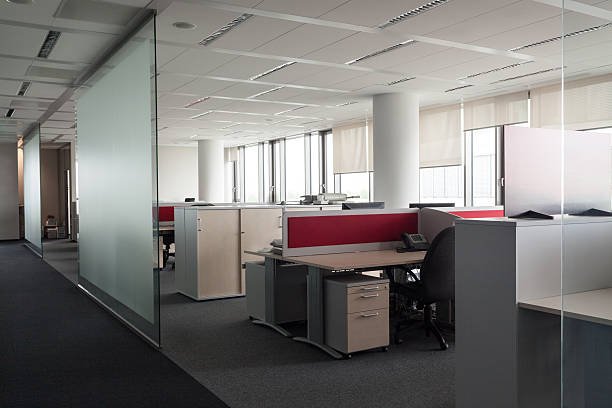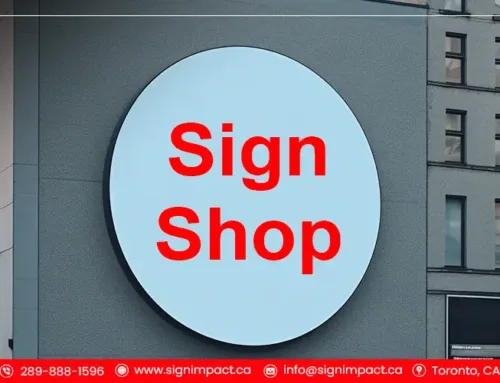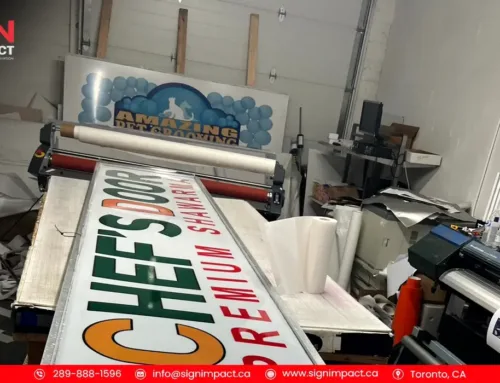In today’s competitive business environment, integrating signage effectively into office or retail space design goes beyond aesthetics. Its a important element of branding customer experience, and functionality. Whether you are creating an inviting atmosphere for customers in a retail space or Foresting productive and professional in a office, signage can be both practical and powerful.
Here are, we will explore how to thoughtfully incorporate signage into your design, ensuring it enhances your space without overwhelming it.
Understand the Purpose of Your Signage
Before selecting or designing your signage, its important to define its purpose. The function of the signage will influence its styles, placement and its messaging.
In retail spaces, signs might b e used:
- Branding: Displaying your logo or slogan to reinforce your brand identity.
- Directional Cues: Helping customers navigate your store by pointing them to different sections or key products.
- Promotions: Highlighting sales, discounts or featured products.
In office spaces, signage might be serve different set of functions, including:
- Wayfinding: Directing employees and visitors to various departments and meeting rooms.
- Information Display: Offering important messages such as office policies or safety information.
- Branding and Culture: creating a cohesive brand presence through visual elements that reflect the company’s values and culture.
Clearly defining the purpose will ensure that the signage integrates seamlessly into your spaces rather than appearing as afterthought.
Aligning Signage with Brand Identity
Signage is one of the most powerful tools for reinforcing your brand identity. The color, fonts, material, and imagery used should align with your overall brand uniquely. In retail spaces, this means ensuring the signage is cohesive with look and feel for your store. If your brand morderen, sleek designs, then your sign age should reflect that, using minimalist fonts and materials like metal, glass. On the other way, a vintage or rustic store might opt for hand- painted signs, wooden materials, distressed finishes.
In offices the same principle appl. Corporate branding can be subtly infused into the design of your signage by using your brand’s logo, taglines, and color. It creates a sense of unity throughout the workspace, but it also leaves a positive impression on both employees and visitors by reinforcing the company’s values and image.
Storefront signs for business are the best option for office or retail space design. It provide high quality material, fonts and color. Contact us, at Signimpact to get best signage to your office space.
Choosing the Right Material for Your Signage
Material plays an important role in how signage is perceived. In both retail and office environments, the material used in signage should complement the design of the space.
Here are some material options based on the atmosphere your want to create:
1. Wood
Ideal for business aiming for a warm, natural, or rustic feel. Wood can be used in office reception areas or to enhance the branding for retail shops.
2. Metal
Metal signs are sleek, modern, and professional. They are often used in corporate environments or luxury retail stores to create a high-end look.
3. Acrylic
Acrylic signage are versatile and can be customised with any energy. They are prrfect for drawing attention to specific reas, promotions, or you brand name.
Incorporating Sugnage as a Design Element
To truly integrate signage into your space, it need to be considered as a key design element rather than just a functional tool. In retail spaces, signage can complement the overall theme or layout of the store. For instance, a coffee shop with a industrial aesthic incorporate matel wall signs with expose blubs to enhance to overall design concept.
In offices, signage more than just functional. Wayfinding signs, fir example, can add a stylish touch to hallways or common areas. Custom signage, such as inspirational quotes or branded artwork, can be incorporated into meeting rooms or lounges to make the space feel company culture
Strategic Placement of Signage
One of the key aspects of successful signage integration is placement. Poorly placed signage can confuse visitors or detract form the aesthetic of the space.
Here are some strategies for palcing signage effectively:
1. Eye-level Positionary
Make sure the moat important signage is at eye level so that its easy to read. Fir retail environment, promotional signs should be clearly visible from engrance or key areas where customers gather.
2. Traffic Flow Consideration
Analyze how people move through the space and palce signs wherer they naturally pause or need informatio.
3. Balance between Too Much and Too Lite
While signage is important, too much can overwhelm tthe space. Strike a blance by using signs only where necessary and ensuring they blend with overall design without becoming intrusive.
Blancing Degital andf Static Signage
With thew rise of digital displays, many businesses are incorporating interactive or changing signage to enhance the customer or employee experience. Digital signage offers a dynamic way to convey information, as content can be updated in real time. For example retail store can display rotating promotions, while an office might use digital signage in the lobby to welcome visitors or display upcoming events.
That said, static signage still holds an important palce. Static signa often offer a sense of performance are readability, which can be important for directional cues, branding or safety information. The key is finding ther right blance between digital and static signage that enhances your space without overwhelming it.
Ensuring Consistency Across Locations
For businesses with multiple locations, maintaining consistency in signage design is critical. This ensures brand recognition and provides customers or employees with a familiar experience, regardless of location. Whether you’re designing signage for several retail stores or multiple office branches, consistency in colors, materials, and fonts is key to reinforcing your brand identity and message.
Maintenance and Longevity of Signage
Finally, it’s essential to consider the maintenance and durability of your signage. High-quality materials may come at a higher initial cost, but they ensure that your signage remains attractive and functional over time. Signage exposed to outdoor elements may need special coatings to protect against weathering, while indoor signage in high-traffic areas should be easy to clean and resistant to wear and tear.
Conclusion
Integrating signage into office or retail space design is about more than just placing a sign on the wall—it’s about ensuring that the signage enhances the overall environment while serving a functional purpose. By aligning your signage with your brand identity, selecting the right materials, strategically placing signs, and considering factors such as accessibility and maintenance, you can create a cohesive, effective, and visually appealing space that elevates both customer and employee experiences.




